Cobá was a Maya city located in the northern portion of the Maya region on the Yucatán Peninsula in Mexico. Most of the city was constructed between 500 and 900-a period corresponding to the Classic Maya Period. Most of the dated inscriptions found in the city date from the seventh century.
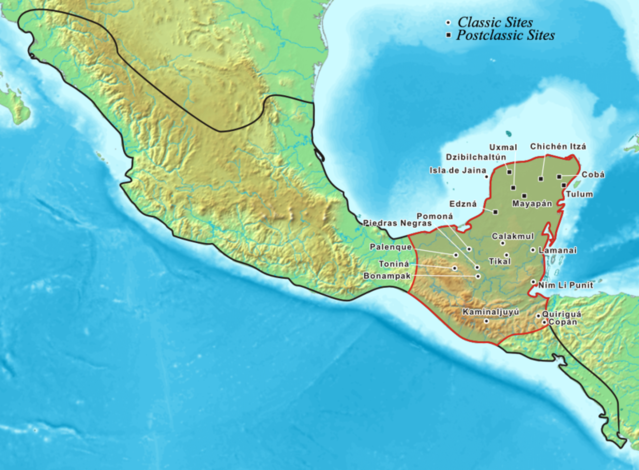
Cobá had a population of at least 50,000 and spread out to cover an area of more than 80 square kilometers. The city was situated around two lagoons. There are a series of elevated roads constructed out of stone and plaster which lead out from the center of the site to small sites. Some of these roads run east to the Caribbean coast. The longest identified road runs over 100 kilometers (62 miles) to the site of Yaxuna.
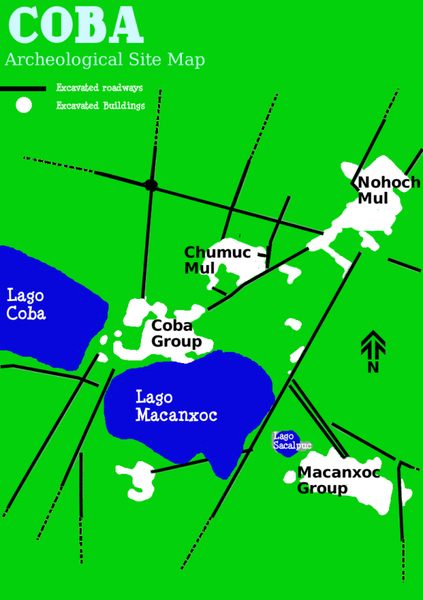
Cobá engaged in trade with a number of other Mayan communities, particularly the ones along the Caribbean coast in present-day Belize and Honduras. This trade utilized the ports of Xcaret, Xel-Há, Tancah, Muyil, and Tulum.
As with other Mayan sites, Cobá has a number of temple pyramids. The tallest of these, known today as Nohoch Mul, is about 42 meters (140 feet) high. This means that it is higher than the pyramids at Chichén Itzá (El Castillo is 33 meters tall) and Uxmal (Pyramid of the Divine is 35 meters tall).
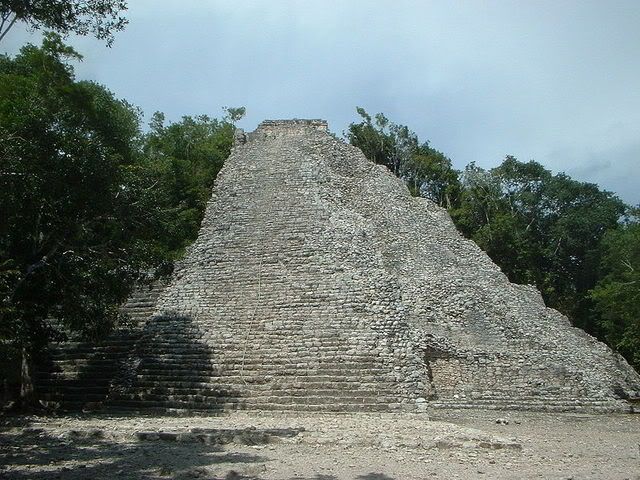
Nohoch Mul is shown above.
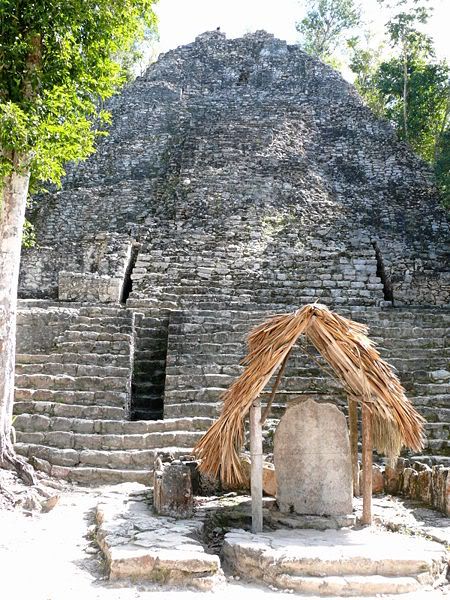
Shown above is the pyramid known as La Iglesia, the second highest pyramid in Cobá.
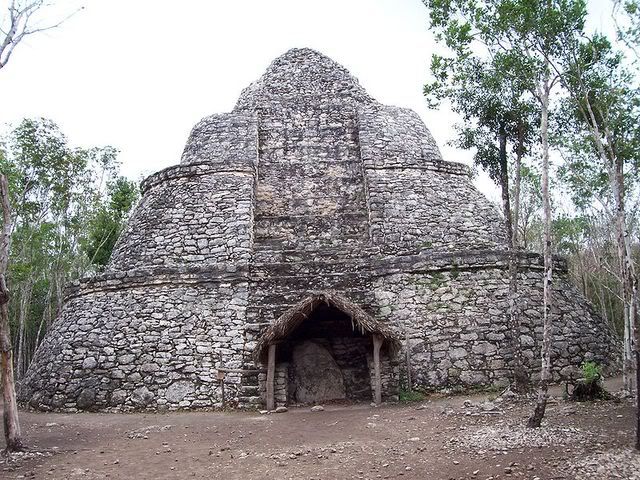
Shown above is the Crossroads Temple.
In Maya cities, ball courts were important features as the ball game was an important part of Mayan ceremonial and social life. In Cobá there are two ball courts which is an indication of its importance as a Maya center.
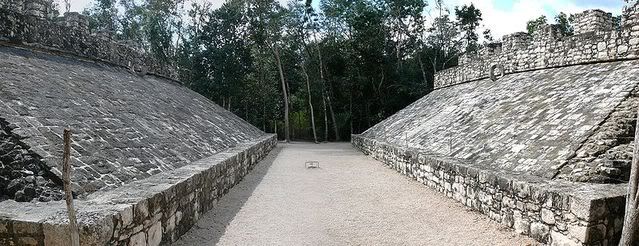
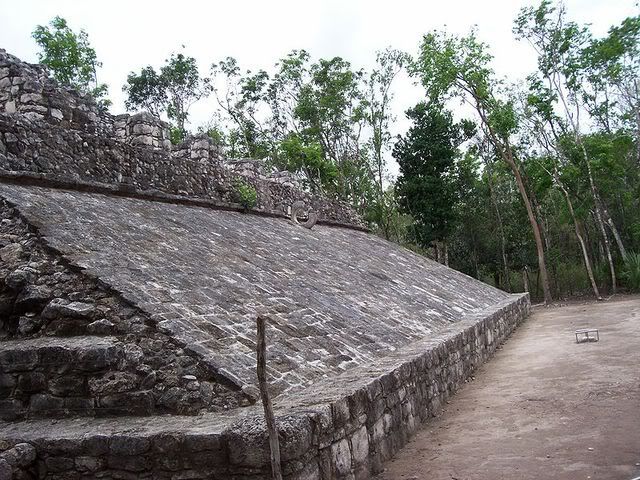
Shown above is one of the ballcourts at Cobá.
In the Yucatán Peninsula water is a critical element. There is actually very little surface water in the area. The cenotes-holes with fresh water-are important. The two lagoons at Cobá were important factors in the development of this city. The Maya built dikes around the lagoons in order raise the water level and make the water supply more reliable.
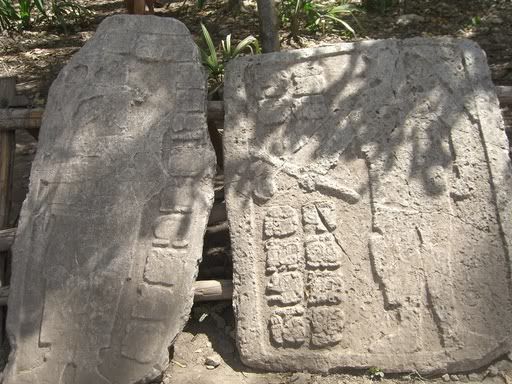
One of the characteristics of the Mayan sites are the stele: carved slabs of stone bearing inscriptions-often dates and the names of kings-and depictions. These were often erected in the plaza, usually in front of a pyramid. The photograph above shows stele from Cobá.
During the Postclassic Maya Period, Cobá remained an important site. New temples were built and old ones were maintained until at least the 14th century and possibly until the arrival of the Spanish.
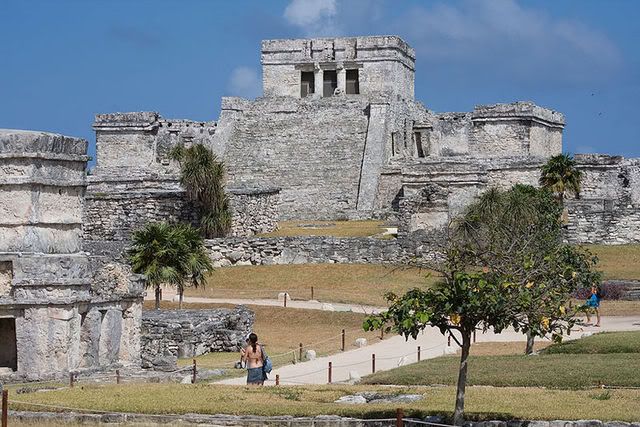

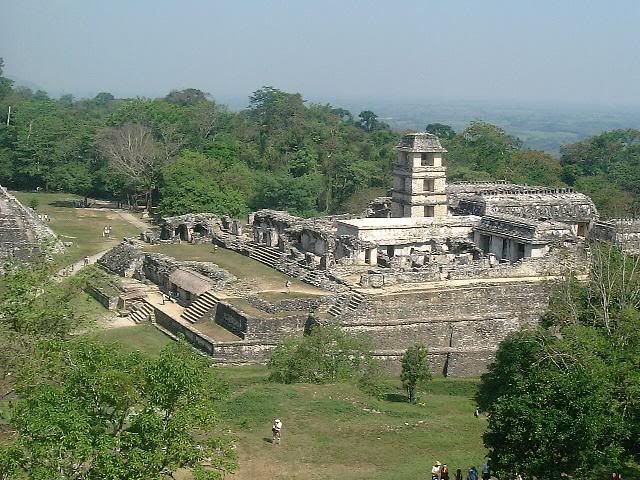
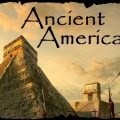
Leave a Reply